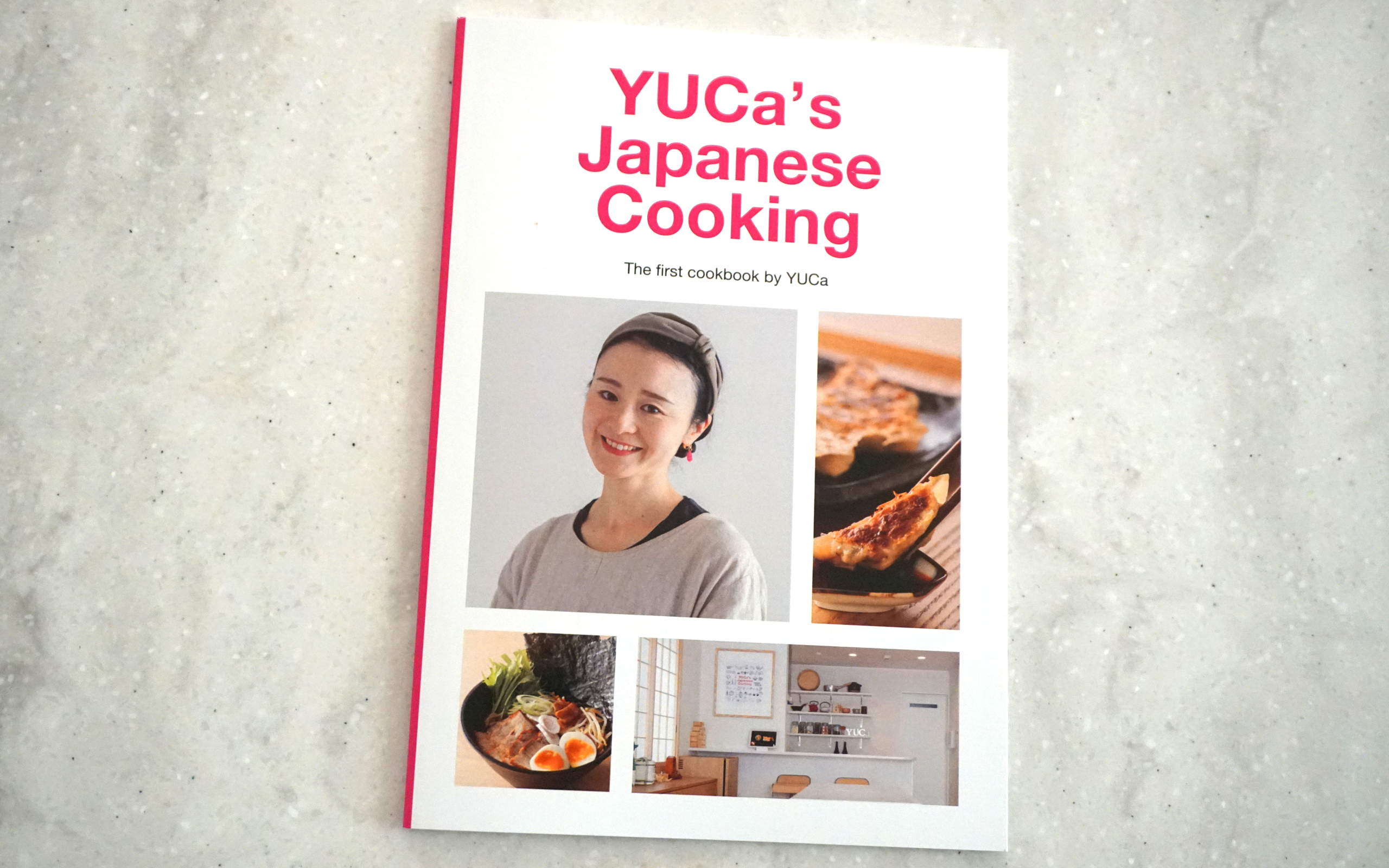Children’s Day (Tango no sekku) 端午の節句
Children’s Day is a Japanese national holiday which takes place annually on May 5th, and it is part of Golden Week Holidays. The day was originally called “Tango no Sekku”, or Boy’s Festival, was celebrated in order to wish the healthy growth of the boys in the family.
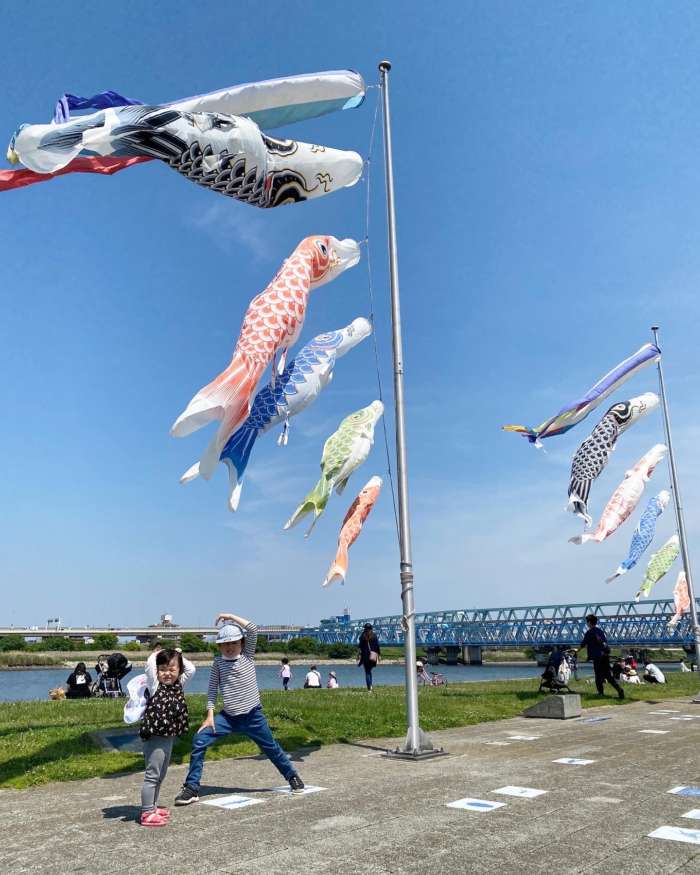
Outside of their houses, families with boys fly large carp streamers called “Koinobori”. Inside they display various kinds of warrior dolls or ornamental helmets called Kabuto because they are believed to be symbols of strength and vitality. At night, people put iris leaves and roots in the bath. It is believed that it will purge noxious vapor.
In 1948, this day was designated a national holiday and renamed “Children Day”. It is now a day for boys and girls to celebrate together.
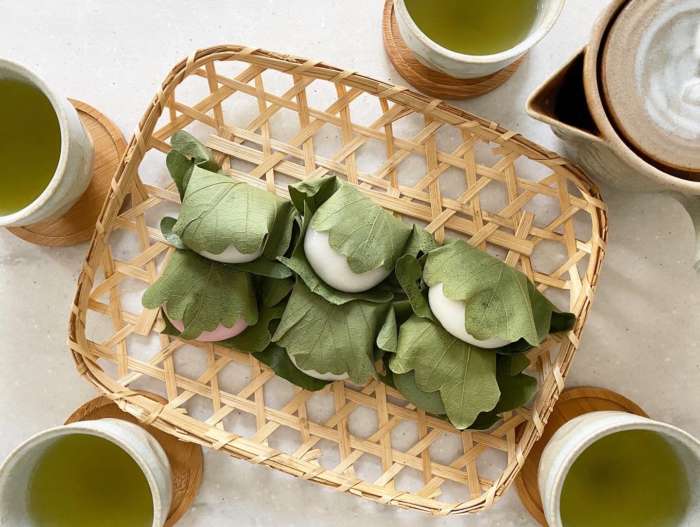
Traditional foods such as “kashiwa-mochi” and “chimaki” are eaten on that day. Kashiwamochi is steamed dumplings filled with sweet red bean paste and wrapped in oak leaves. Oak trees don’t drop their leaves until new shoots have begun to appear. The leaved represents the wish for continuation of the family line and are thus an auspicious part of these traditional sweets.
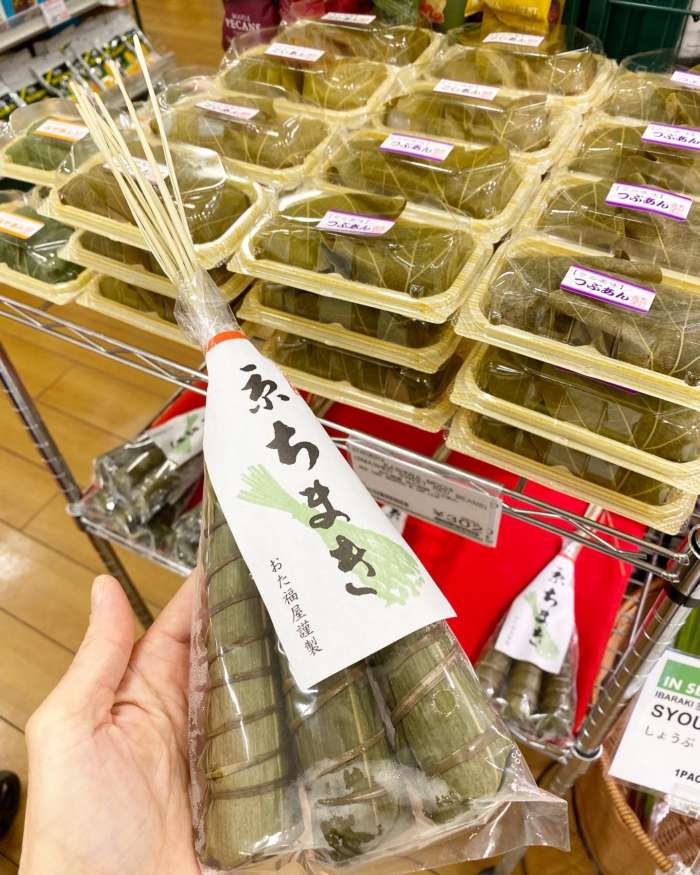
Chimaki is also dumplings made of glutinous rice, wrapped in bamboo leaves and tied with a piece of rush. This type of sweets came from China and is seen in various forms around Japan.
Iris leaves and roots are also used in baths. It is believed that putting iris leaves and roots in the bath can ward off evil spirits.
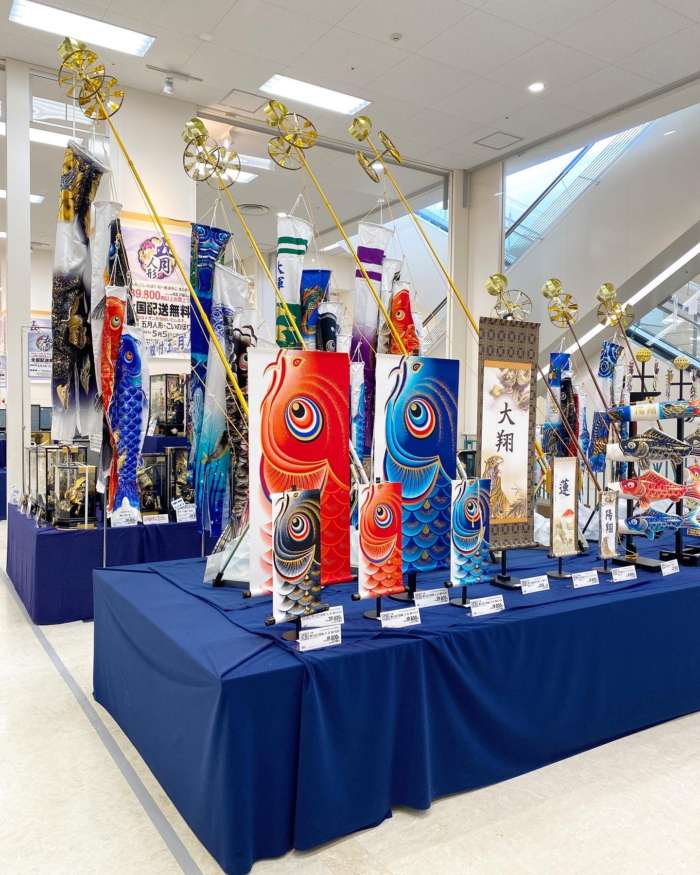
Koinobori (Carp Streamers, こいのぼり) sold at the store. During the Edo period, common people began to make banners in the shape of carp because according to an old Chinese legend, there was a carp which swam upstream all the way to heaven and turned into a dragon. Parents who want their sons to grow up strong and brave so to this day, in the month of May people have continued the practice of flying koinobori. They are usually seen with the streamers on top and the black, red and blue carps below.
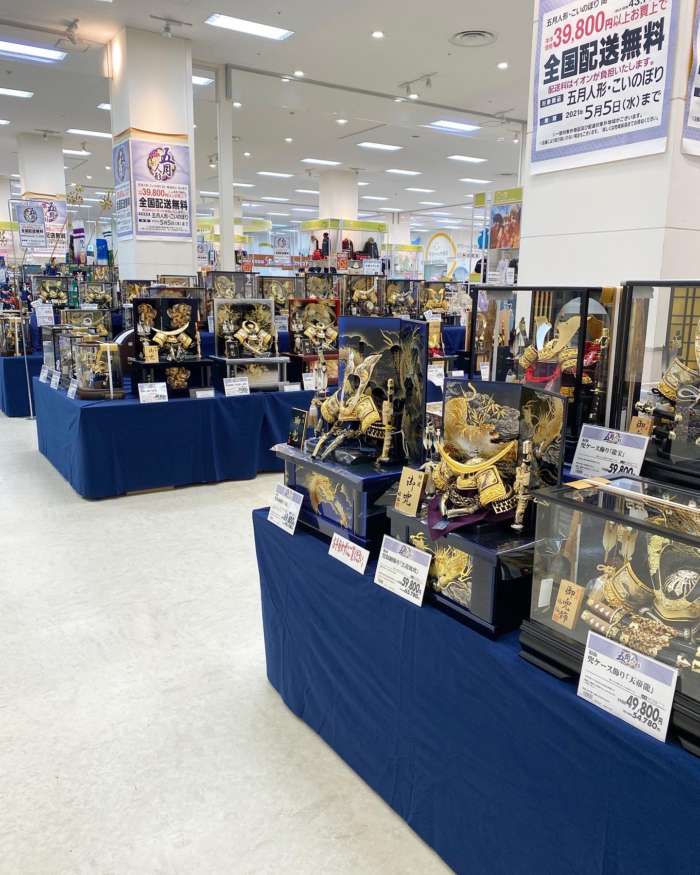
During this season in very olden times, from about the 7th century, people observed customs which had come from China. May was thought to be an unlucky month so in order to drive away evil spirits, ordinary working people picked certain plants which were valued for their medicinal powers and made potions or decorative dolls to hand in the doorways.
In later years, from the Edo period, they began to display warrior dolls, helmets and banners which symbolized people’s hopes that their sons would grow up into strong and brave young men.
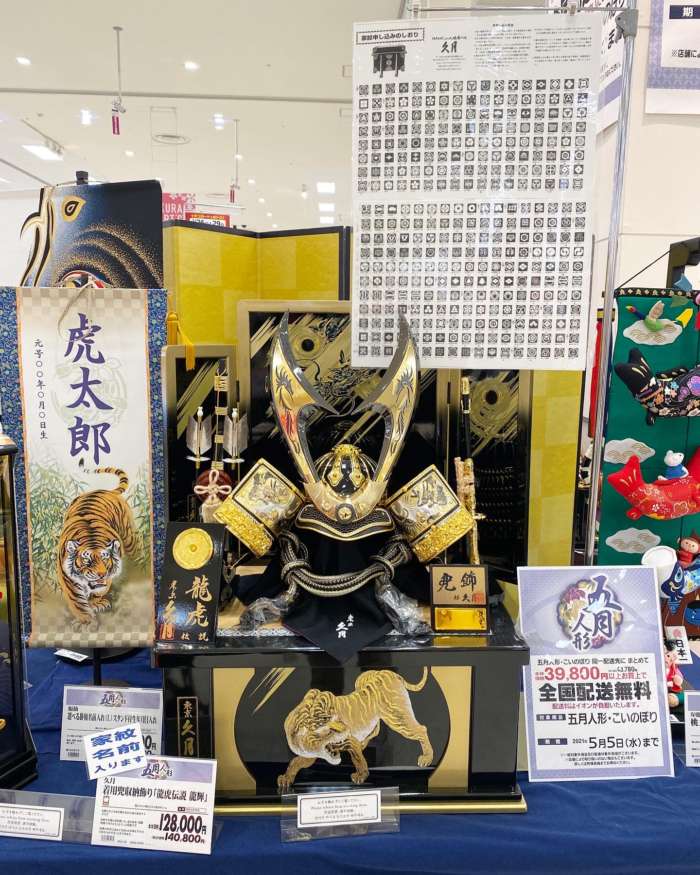
This was the most expensive warrior doll set in this shop!
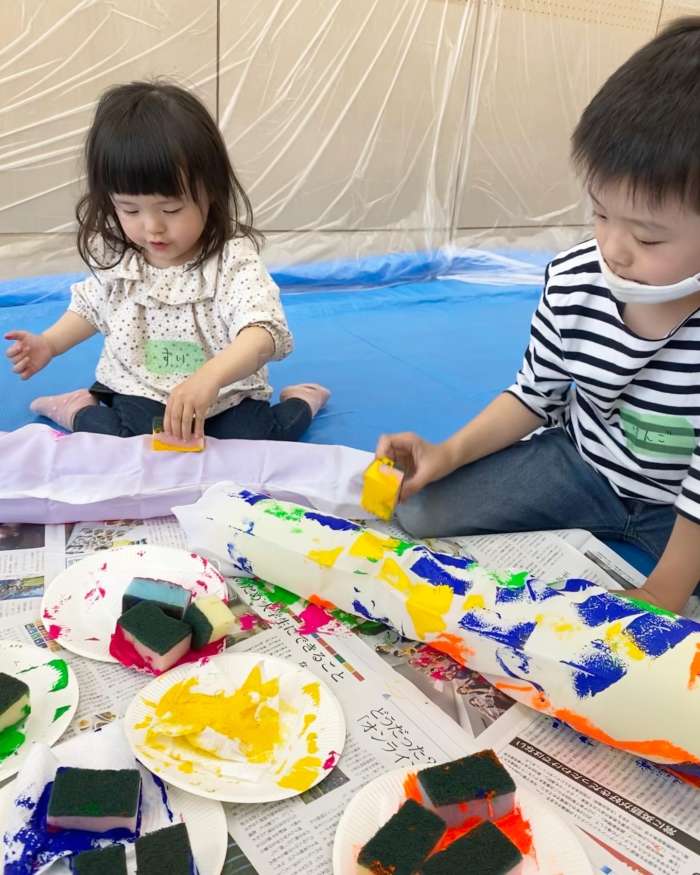
This year, Kengo and Sui took part in the workshop to make koinobori. Their koinobori was so colorful and we all loved it 😍!!!
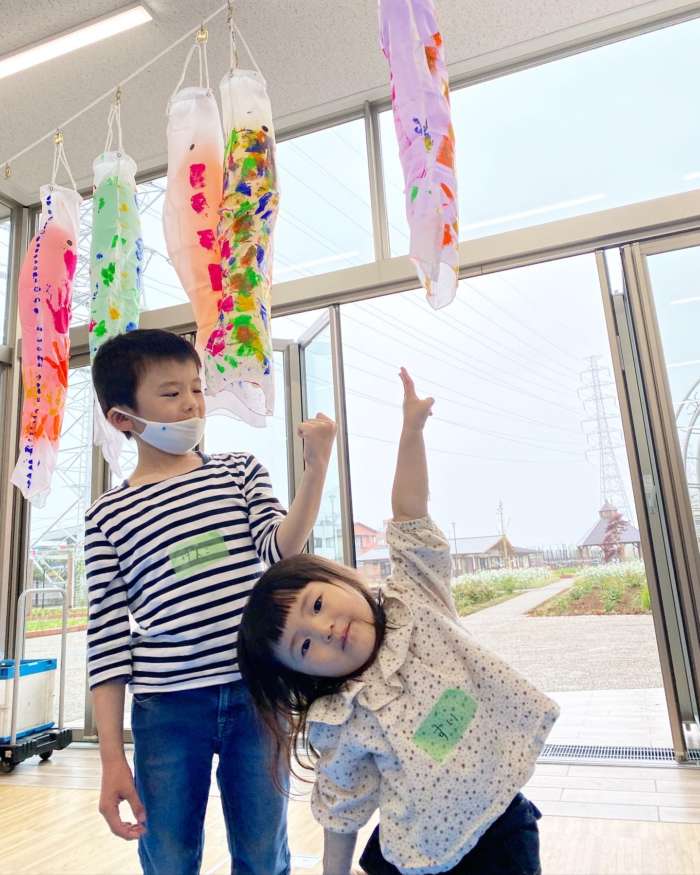
Memo:
Are you interested in more about Japanese culture & events? Check here!








